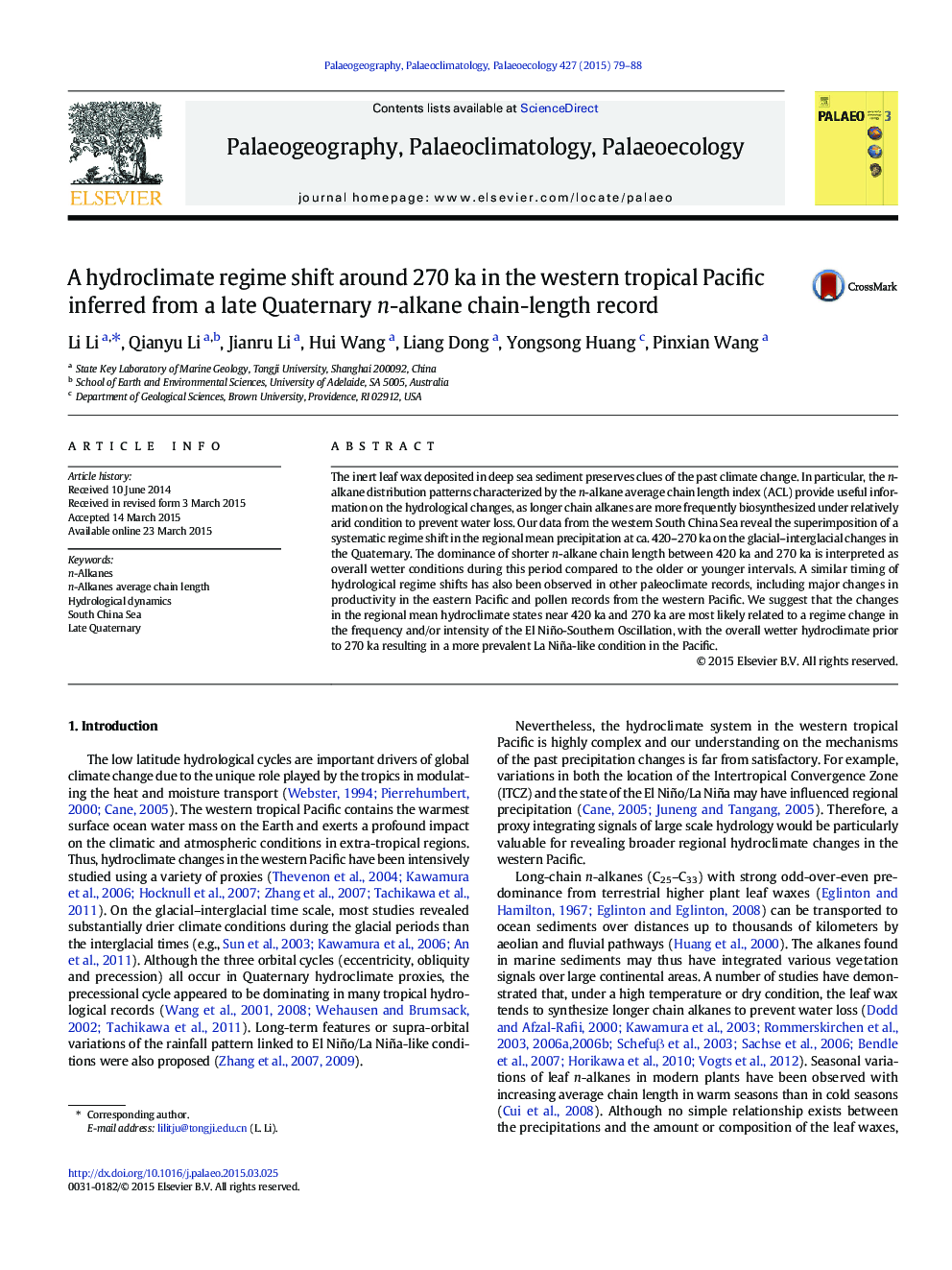| Article ID | Journal | Published Year | Pages | File Type |
|---|---|---|---|---|
| 6349780 | Palaeogeography, Palaeoclimatology, Palaeoecology | 2015 | 10 Pages |
Abstract
The inert leaf wax deposited in deep sea sediment preserves clues of the past climate change. In particular, the n-alkane distribution patterns characterized by the n-alkane average chain length index (ACL) provide useful information on the hydrological changes, as longer chain alkanes are more frequently biosynthesized under relatively arid condition to prevent water loss. Our data from the western South China Sea reveal the superimposition of a systematic regime shift in the regional mean precipitation at ca. 420-270Â ka on the glacial-interglacial changes in the Quaternary. The dominance of shorter n-alkane chain length between 420Â ka and 270Â ka is interpreted as overall wetter conditions during this period compared to the older or younger intervals. A similar timing of hydrological regime shifts has also been observed in other paleoclimate records, including major changes in productivity in the eastern Pacific and pollen records from the western Pacific. We suggest that the changes in the regional mean hydroclimate states near 420Â ka and 270Â ka are most likely related to a regime change in the frequency and/or intensity of the El Niño-Southern Oscillation, with the overall wetter hydroclimate prior to 270Â ka resulting in a more prevalent La Niña-like condition in the Pacific.
Related Topics
Physical Sciences and Engineering
Earth and Planetary Sciences
Earth-Surface Processes
Authors
Li Li, Qianyu Li, Jianru Li, Hui Wang, Liang Dong, Yongsong Huang, Pinxian Wang,
